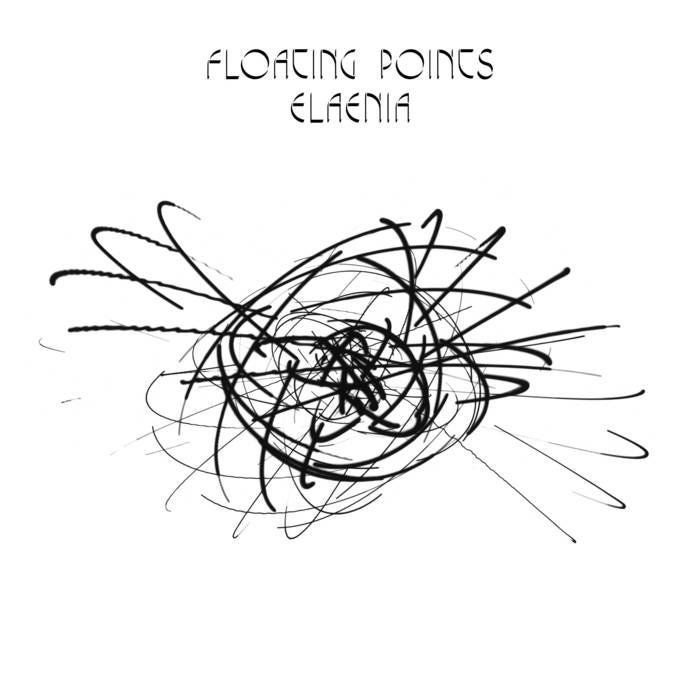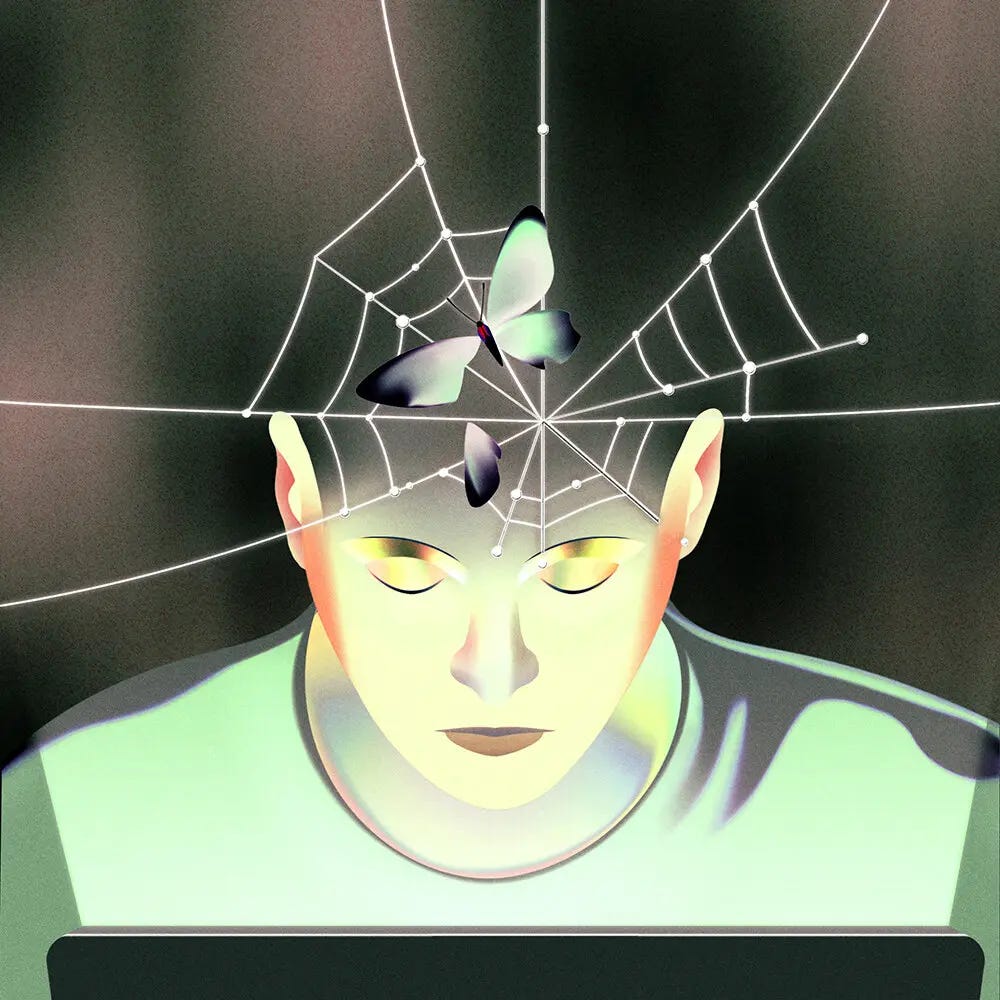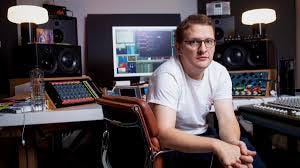Turning Subcognitive For Fun and Profit
How a decade-old work of ambient electronic music speaks to the AI Slop moment
The other week, in a New York Times op-ed piece titled “Artificial Intelligence Will Destroy the Way We Think,” an assistant professor of Philosophy at University of California Irvine named Anastasia Berg observed that the current headlong embrace of AI is precipitating a decline in higher-order reasoning. Err, rather, in the very ability to reason.
Unsurprised that her students used AI resources she specifically disallowed to complete a take-home final, Berg shared what might be described as mounting dread with a colleague. Who provided Berg (and us!) with a stark and ominous status update: “Our students are about to turn subcognitive.””
Berg continues: “At stake are not just specialized academic skills or refined habits of mind but also the most basic form of cognitive fluency…..This means they will lack the means to understand the world they live in or navigate it effectively.”
Frightening prospect. Rings true to lived experience. Surpasses even the quaint decades-old Devo notion of de-evolution.
Dismiss this as just more handwringing over AI if you must – as others have noted, there’s a brisk pundit business in shouting about “AI dread.”
Of course, there’s an even more lucrative business generating “AI slop.”
At present, the difference between human endeavor and AI emulation registers most vividly in the arts. You don’t need advanced musicology training to recognize that a sonata or some “Bossa Nova Chill” playlist is an elaborate forgery, served up by a studious bot charged with creating this particular version of slop. Even when the ear is momentarily beguiled, the heart is not: There’s something eerily hollow about these works that’s redolent of the faux-Bach studies offered as lesson material to pianists -- see “Teaching Little Fingers to Play.” (Which was, of course, also about teaching little ears to listen.)
Paradoxically, one zone of music where it’s easy to detect AI fakery is ambient music – the realm sometimes dismissed as “paint-drying music,” in which creators (whether human or machine) deliberately seek to pause the listener’s “processing” mind, to better cultivate calming, receptive and, yes, subcognitive states. These are induced over time, through repetition, and the undulating oscillations of synthesizers, and the careful deployment of ever-morphing textural sounds.
AI’s notion of chill music is mostly linear – horizontal stripes on a grid, arrangements of droning “parts” that slide in and out of phase but don’t really move much. Having swallowed countless hours of human compositional endeavor, the algorithm spits out the broadest general outlines of how ambient music “goes.” But the machine-generated music lacks contours, shape, purpose, heart, narrative. It’s just a cynical replica: Sonic drapery, nothing behind the curtain.
This hit me right between the ears recently, listening to “Peroration Six” from Elaenia, the 2015 debut of the British electronic musician Sam Shepherd. The keyboardist and composer, who records under the name Floating Points, attracted boatloads of attention in 2021 for Promises, an extended collaboration involving saxophonist Pharoah Sanders and the London Symphony Orchestra. (Those who first encountered Floating Points via Promises are urged to seek out Elaenia, which offers a broader, more immersive, less-showy experience.)
Elaenia was recently remastered to mark its 10th anniversary; while we usually avoid covering these types of reissues here at Echo Locator (you’re welcome!), this one, released when AI was a glimmer not a threat to livelihoods or destroyer of the cognitive powers of young minds (!), is worthy of attention. As a counter to the dim mechanical roteness of copycat AI. As an illustration of just how much blood-and-guts drama can happen beneath the shimmering contours of a sustained chord.
It’s also a potent reminder of the human wiring for drama, period. “Peroration Six” begins in a generic, pre-rhythmic primordial ooze, a drone spiced with splashes of electric piano. A drum beat familiar to fans of Radiohead enters from the back of the mix; it sits beneath a textural wash that revolves first around synth, then electric guitar, then strings. There is no conventional melody – the “theme” of the piece is its deliberate, never-quite-cresting surge. Over more than five minutes, Shepherd stretches and twists the mostly consonant harmonies, transforming what began as calming tonal pools into a churning, formless aura of disquiet. This is enhanced by the very live performance of drummer Leo Taylor, whose fills grow wilder and more thrasingly unhinged as the piece evolves.
Admittedly, the above paragraph describes a closer listen than you might ever undertake if your goal was “Music for Study” or whatever. But ambient music is still music, and the whole of Elaenia shows how it can artfully operate on several levels at the same time: As Shepherd changes the focus from Steve Reich-style metric “cells” to vast low-tide shores of blissed-out chords to rhapsodic wordless choir singing to chattering synth arpeggiations, he’s not showing off tricks – he’s painting with audio the way a camera operator would -- circling a scene, catching glances and collisions from all angles.
Shepherd holds a PhD in neuroscience, a field that demands precision of thought and respect for the methodical process that underpins experimentation and inquiry.
He brings that discipline to his music, inevitably, but he’s not clinical or cerebral about anything: The listener senses that the person at the controls of Elaenia is a lively intellect who also might be a subversive manipulator of common time who also might be a stealth joker of the mixing board. The juicy stuff happens beneath the surface, where Shepherd blends and transfigures and re-orders the sounds as the pieces evolve.
That’s perhaps the key distinction: These pieces do evolve and develop over time; they’re driven by a sense of sweep, a narrative intention. I’ve yet to encounter any AI ambient loaded with those musical traits – most often it’s just the work of a subcognitive bot endeavoring to enchant the subcognitive mind.







Love this - thanks, Tom. And now I can't wait to check out the remastered Elaenia, see how it hits me different.